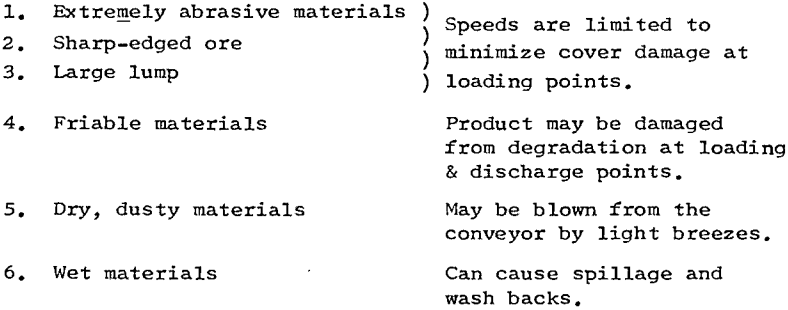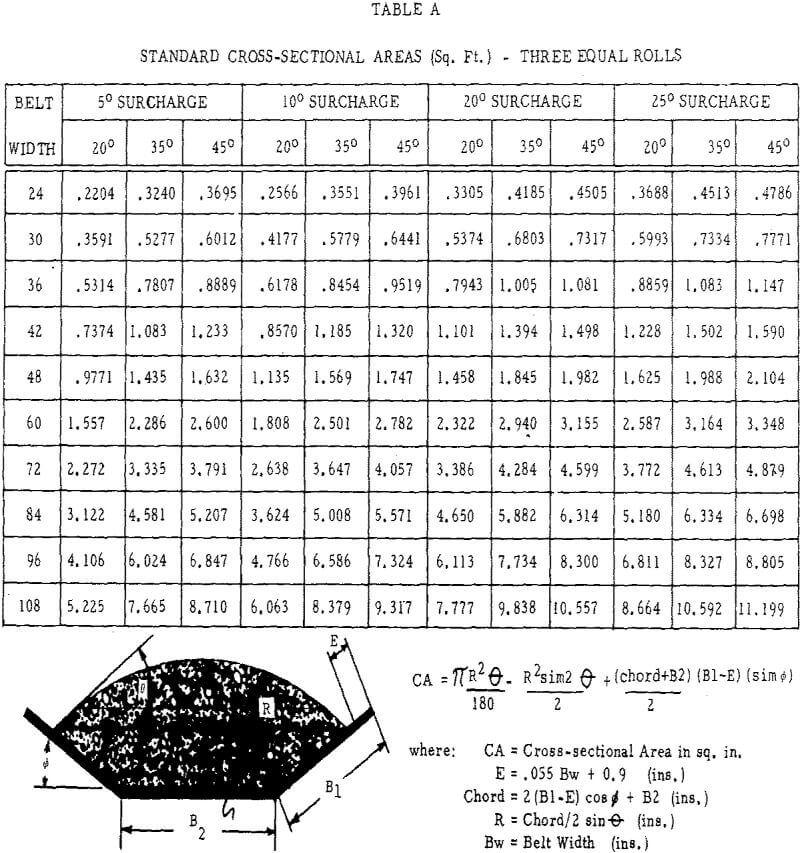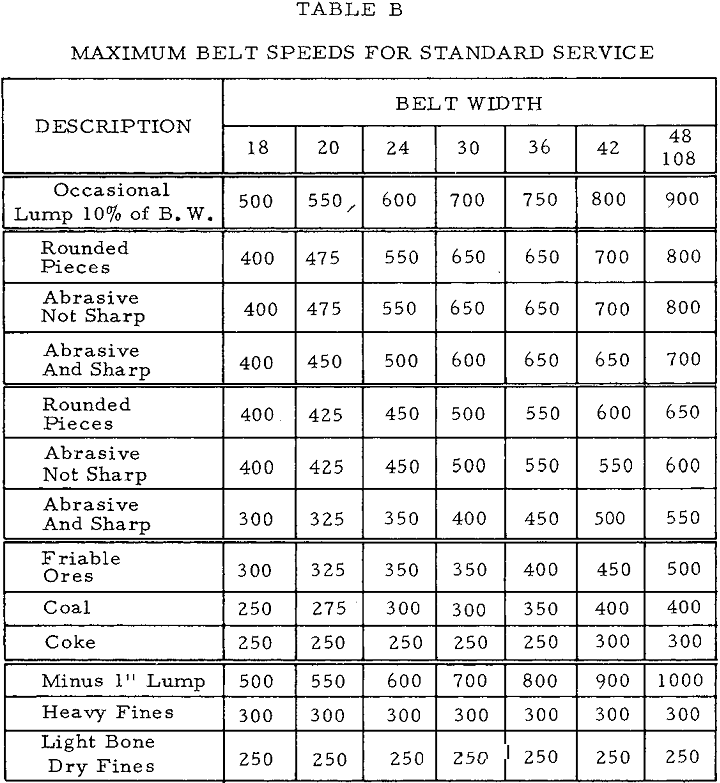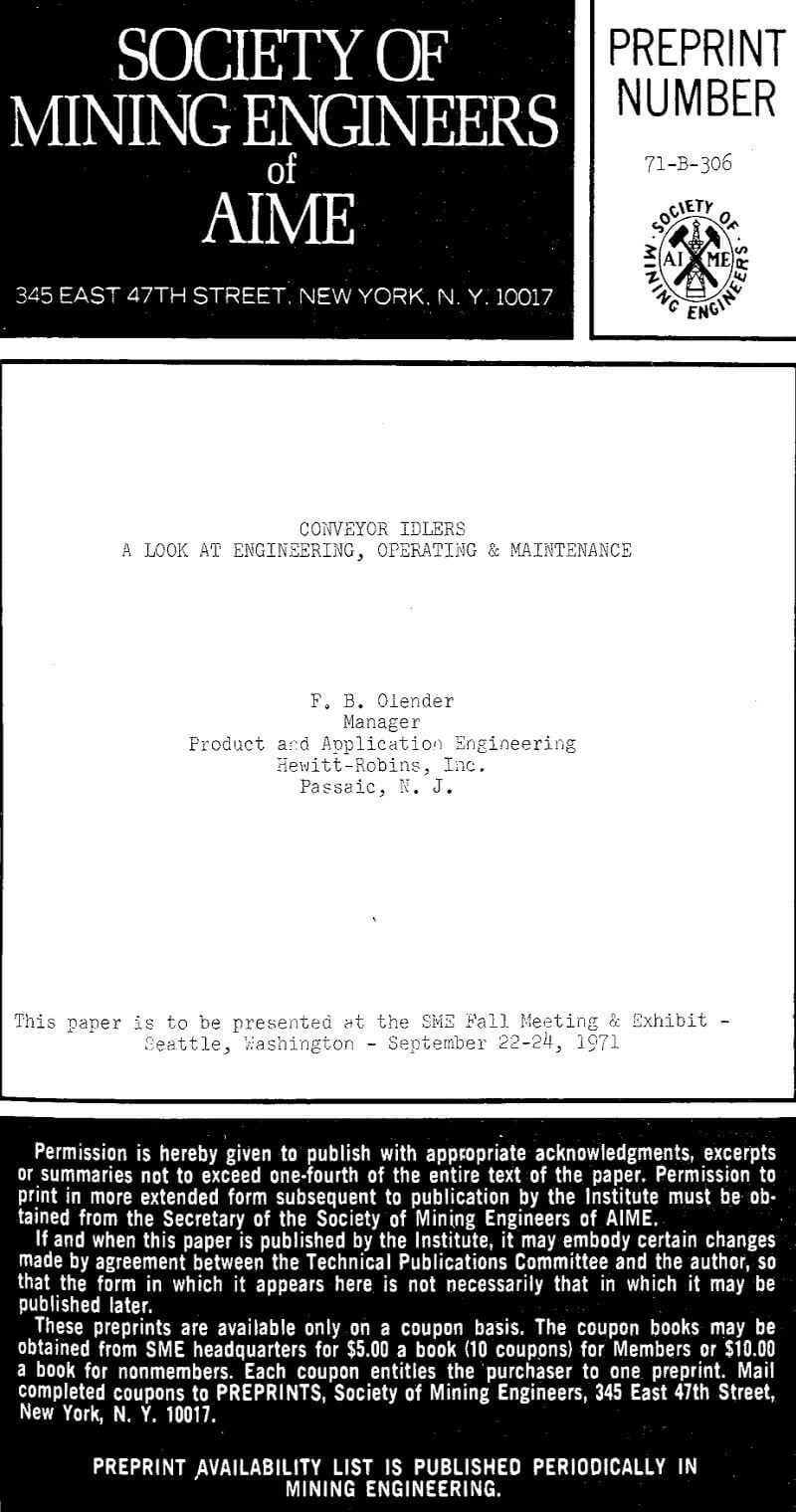Table of Contents
Depending on the source of reference used, belts for handling bulk material underground came into being between 1900 and 1920, while strip mining appeared in the thirties. The conveyor belt speeds in that era were in the 300 fpm to 500 fpm range. Belt speeds of 600-700 fpm were in vogue in the fifties, and the early sixties saw speeds of 800-900 fpm. Today, speeds of 1000 fpm are not looked at with dismay; in fact, speeds of 2000 fpm are being discussed.
Idler Engineering
Only the major factors of cross-sectional area, lump size and speed influencing sound idler selection will be reviewed, along with idler friction and its present-day importance to long overland conveyors.
How do you basically select a belt conveyor idler? Before any selection can be made, belt width, speed, and capacity must be determined. The familiar equation establishing capacity is:
C = Md x CA x Bs/33.3
Where: C = Capacity in short tons/hr
Md = Material Density in lbs/ft³
CA = Cross-Sectional Area in ft²
Bs = Belt Speed in ft/min
From the equation it is obvious that variables in the use of belt speed and cross-section area can influence the selection of the proper idler.
The standard edge distance allows for a 5% belt movement without allowing spillage of material to occur. For below-ground room entry belts (called panel belts) and shiftable above-ground conveyor belts, a 10% allowance should be made for belt fleeting. This additional allowance is needed because of the inherent undulations and misalignments of panel and shiftable belt application.
Idler width (or belt width) selection is also determined by the material lump size. Frequently, maximum lump size will force the selection of a wider conveyor belt than would otherwise be necessary. One reason for a wider belt would be to prevent lumps from jamming between loading point skirtboards and transfer chutes. Lumps larger than 1/3 of the belt width would ride on the two outer troughed rolls imparting a lump impact to the idler, especially during material tailing.
How fast should the conveyor be run? When the capacity has been established and the type of material to be handled is known, a suitable combination of belt speed and width may be selected. The speed must be sufficient to accommodate the peak loading rate on the belt width selected, or spillage will result. The best combination of belt width and speed is the maximum speed and minimum width at which the material can be handled.
Most of the factors that limit conveyor belt speed relate to the material being handled:

Selecting Idler
Once capacity, belt width, and speed have been established, the selection of the proper idler for the job is usually just a consideration of its load capacity to the load requirements. The idler load consists of material and belt weights and any additional belt component loads induced from vertically misaligned idlers and/or curved sections in the conveyor profile.
Now that the idler can be selected, what about its power requirements? Idler friction is a portion of the total required horsepower needed to drive a conveyor. On short or incline conveyors it is only a small portion of the total. Today, the steel-cord belt has made long overland conveyors of 15,000 – 20,000 feet practical; and on these units idler friction becomes a significant factor.
Actual idler friction values will not be used in this paper because they vary with idler series, designs, and with each idler manufacturer. Instead, the general behavior pattern of idler friction and the considerations a designer must make in applying these facts to the overall conveyor design will be reviewed.
Friction break-in life is defined as the time required for the idler to reach its lowest torsional resistance value. The time to do this varies with idler series and type and the speed at which it is being operated. It is obvious that an idler of the same series and type running faster will break in faster.
Operation and Maintenance
Operation and maintenance will be treated as one subject because they are actually synonymous. It can be actually called installation and servicing of idlers. Normally, the idler requires little attention if installed properly initially.
The most important item regarding good idler operation is the proper installation of the total conveyor. A belt conveyor must be constructed and erected so that the belt consistently runs centrally. To aid in this, the following should be maintained:
- All pulleys must be in line and at 90° to the center line of the belt.
- The material must be loaded centrally on the belt.
- The belt splices should be square to the center line of the belt.
- The supporting structures must be straight and level transversely.
- All belt take-ups should be square to the belt center line and free to slide easily.



